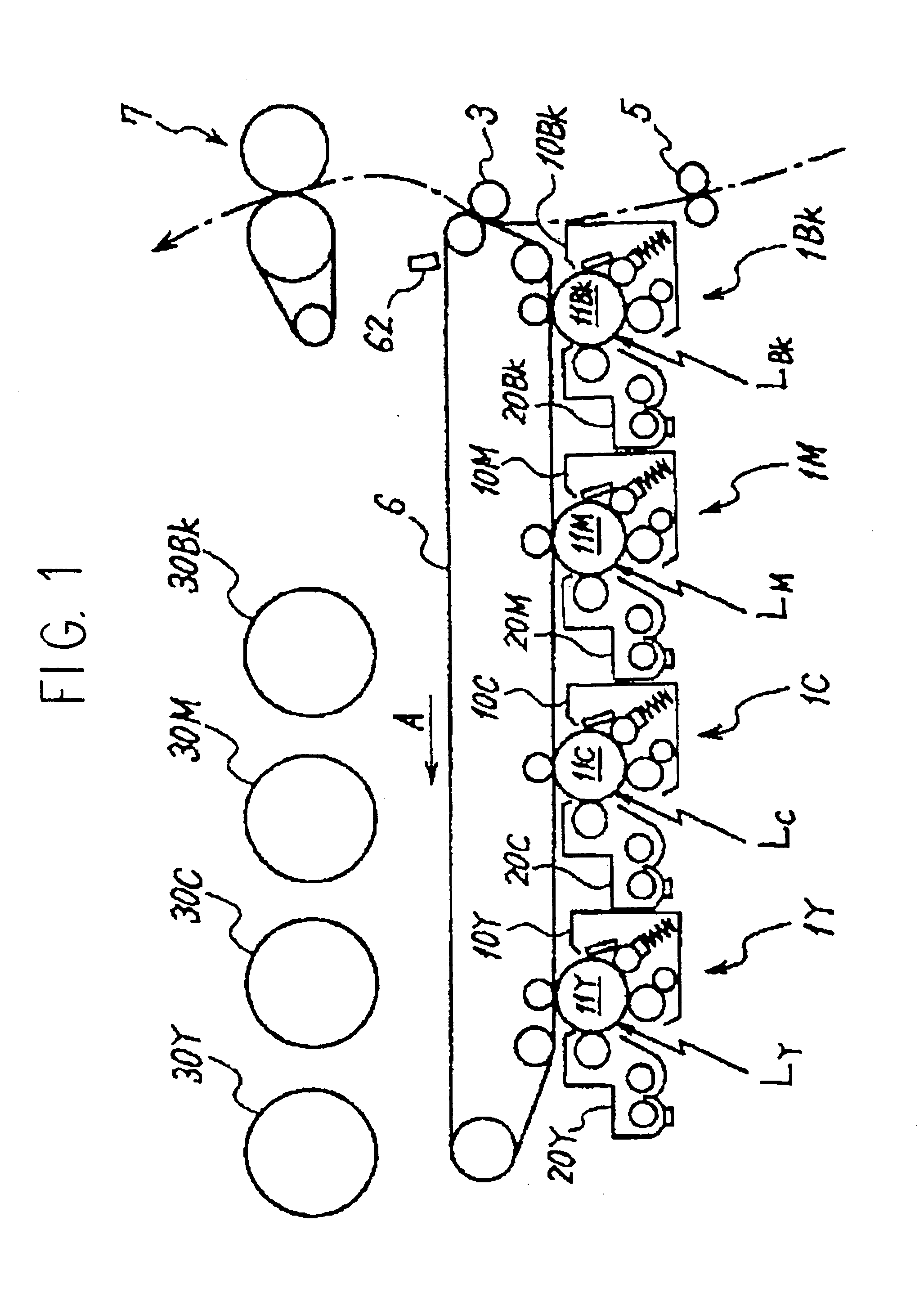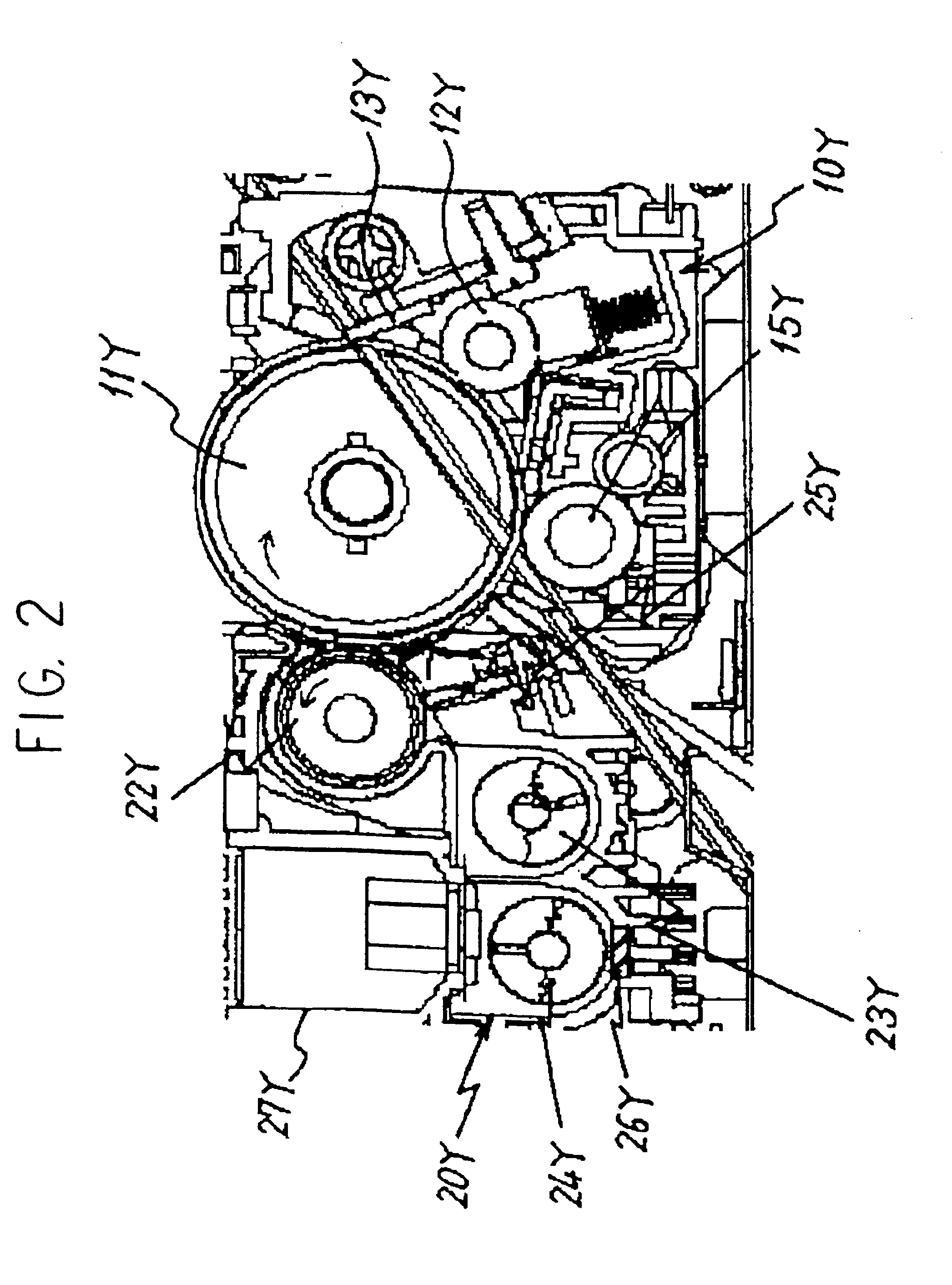Image forming apparatus and image density control method
a technology of image density and forming apparatus, which is applied in the direction of electrographic process apparatus, instruments, optics, etc., can solve the problems of inability to obtain constant image density, inability to fix the charge of toner that contributes to development, and inability to fix the development ability, etc., to achieve the effect of suppressing the amount of toner consumed and constant image density
- Summary
- Abstract
- Description
- Claims
- Application Information
AI Technical Summary
Benefits of technology
Problems solved by technology
Method used
Image
Examples
Embodiment Construction
[0030]First, an outline of the present invention will be described.
[0031]As described above, a constant image density cannot be obtained due to variation in the development ability resulting from differences in the amount of new replenishment toner or old toner in a development device. Hence, in the present invention, information for learning a toner replacement amount in the development device over a predetermined time period is detected. From this information, it is possible to learn the amount of toner in the development device that is consumed within the predetermined time period and the required amount of new replenishment toner. In other words, it is possible to learn the ratio of new toner or the ratio of old toner in the development device. Thus, the development ability can be learned, and therefore, on the basis of the information detection result, a toner concentration control reference value can be corrected by first toner concentration control reference value modifying m...
PUM
 Login to View More
Login to View More Abstract
Description
Claims
Application Information
 Login to View More
Login to View More - R&D
- Intellectual Property
- Life Sciences
- Materials
- Tech Scout
- Unparalleled Data Quality
- Higher Quality Content
- 60% Fewer Hallucinations
Browse by: Latest US Patents, China's latest patents, Technical Efficacy Thesaurus, Application Domain, Technology Topic, Popular Technical Reports.
© 2025 PatSnap. All rights reserved.Legal|Privacy policy|Modern Slavery Act Transparency Statement|Sitemap|About US| Contact US: help@patsnap.com



